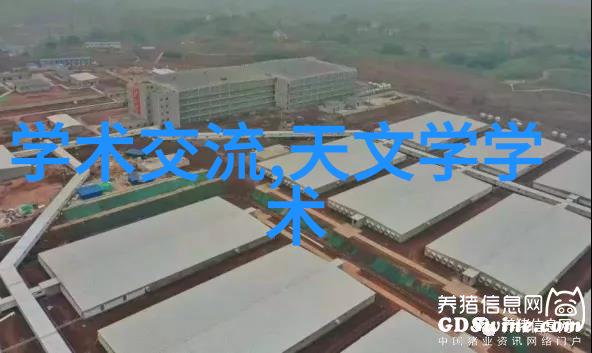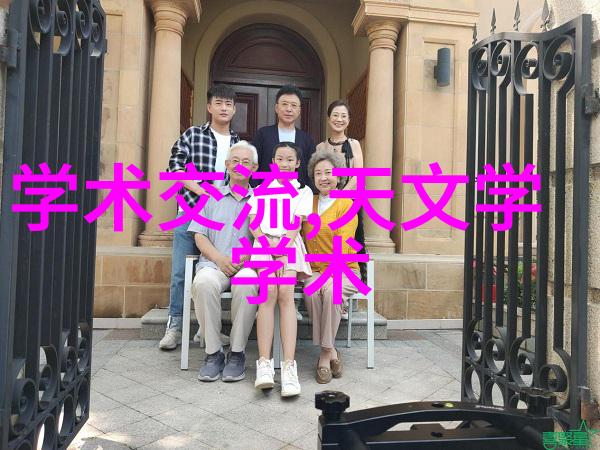上海科技大学、中南大学等三位专家讲述下一代超声技术
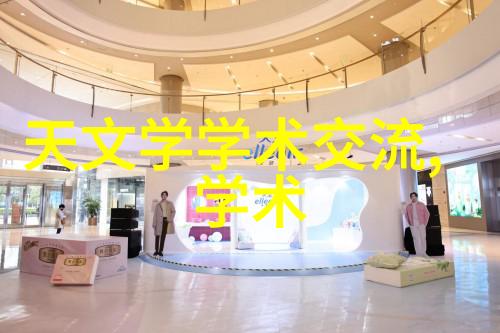 直播时间:2024年11月12日(周二)20:00-22:00 直播平台:
直播时间:2024年11月12日(周二)20:00-22:00 直播平台: 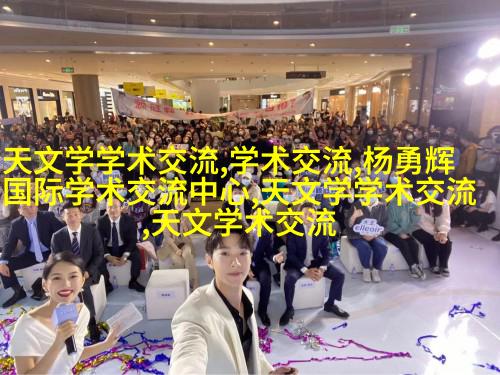 科学网APP (科学网微博直播间链接) https://weibo.com/l/wblive/p/show/1022:2321325099911250313446
科学网APP (科学网微博直播间链接) https://weibo.com/l/wblive/p/show/1022:2321325099911250313446  科学网微博
科学网微博  科学网视频号 北京时间11月12日晚八点,iCANX Youth Talks第八十一期邀请到了上海科技大学副教授吴涛、 杭州荷声科技有限公司陈超、中南大学教授陈泽宇主讲,高通公司高通公司首席工程师Jessica Liu Strohmann、北京大学助理教授胡鸿杰担任研讨嘉宾,北京大学研究员卢奕鹏担任主持人,期待你一起加入这场知识盛宴。 【嘉宾介绍】
科学网视频号 北京时间11月12日晚八点,iCANX Youth Talks第八十一期邀请到了上海科技大学副教授吴涛、 杭州荷声科技有限公司陈超、中南大学教授陈泽宇主讲,高通公司高通公司首席工程师Jessica Liu Strohmann、北京大学助理教授胡鸿杰担任研讨嘉宾,北京大学研究员卢奕鹏担任主持人,期待你一起加入这场知识盛宴。 【嘉宾介绍】  吴涛 上海科技大学 Thin Film based Ultrasound Transducers 【Abstract】 Thin film ultrasound transducers represent a pivotal advancement in ultrasound technology, leveraging the unique properties of thin-film materials to enhance imaging and diagnostic capabilities in both medical and industrial applications. Traditional ultrasound transducers, while effective, face limitations in resolution, sensitivity, uniformity and adaptability to various scanning environments. This talk explores the development, fabrication, and performance characteristics of MEMS based thin film ultrasound transducers, aiming to address these challenges.Recent advancements demonstrate that thin film ultrasound transducers achieve superior resolution and sensitivity, facilitating clearer and more precise imaging, particularly in high-frequency applications. By addressing the current limitations of traditional ultrasound technology, thin film transducers pave the way for more effective and versatile diagnostic tools in both healthcare and industry. Further research and development are encouraged to fully realize the potential of this promising technology. 薄膜超声换能器代表了超声技术的重大进步,通过利用薄膜材料的独特特性来增强成像和诊断能力,可广泛应用于医疗和电子领域。传统的超声换能器在分辨率、灵敏度、集成化以及适应多样化应用环境等方面仍然存在局限性。本次演讲将概述薄膜超声换能器领域的进展、挑战和未来发展方向。通过解决传统超声技术的当前局限性,基于微纳机电系统(MEMS)技术的薄膜超声换能器将会在医疗、消费电子和工业应用等诸多领域提供了更有效且功能更强大的诊断和传感工具。这一先进技术具有巨大的发展潜力,进一步的研究和发展将有助于充分实现其应用价值,希望通过本次演讲和讨论使您对薄膜超声换能器的前景和应用有更深入的了解。 【BIOGRAPHY】 Tao Wu is currently a tenured Associate Professor at School of Information Science and Technology, ShanghaiTech University, Shanghai, China. He received the B.S. degree in Electrical Engineering from Zhejiang University, Hangzhou, China, in 2007, and Ph.D. degrees from the University of California at Los Angeles, Los Angeles, CA, USA, in 2011, respectively. Dr.Wu joined ShanghaiTech in 2017 and established Shanghaitech Microsystem And noveL transducer Laboratory (SMALL). Dr. Wu’s research interests include design and fabrication of chip-scale hybrid piezoelectric transducers, advanced fabricatoin process and CMOS-MEMS microsystem. He has authored or co-authored more than 100 papers in prestigious journals and conferences. 吴涛,上海科技大学信息科学与技术学院常任副教授、研究员、博导。2011年博士毕业于美国加州大学洛杉矶分校,毕业后曾供职于英特尔公司,以博士后研究员身份加入美国斯坦福大学和东北大学。于2017年7月加入上海科技大学,建立了上科大微系统与先进传感器实验室(SMALL)。科研方向包括微纳机电系统MEMS/NEMS,压电射频/超声器件,集成电路工艺,以及MEMS-CMOS集成微系统。吴涛博士是IEEE高级会员,长期受邀担任多个国际期刊审稿人和国际会议程序委员会委员,先后主持/参与了国家自然科学基金、国家科技攻关专项、上海市科委、江苏省重点研发计划等多项科研项目,在包括(NPG) Microsyst. Nanoeng., Nat. Comm., JMEMS, Elec. Devi. Lett., Appl. Phys. Lett., IEEE T-UFFC, IEEE MEMS, TRANSDUCERS, SENSOR, IUS等国际著名期刊和会议上发表学术论文100余篇,H-index 27。
吴涛 上海科技大学 Thin Film based Ultrasound Transducers 【Abstract】 Thin film ultrasound transducers represent a pivotal advancement in ultrasound technology, leveraging the unique properties of thin-film materials to enhance imaging and diagnostic capabilities in both medical and industrial applications. Traditional ultrasound transducers, while effective, face limitations in resolution, sensitivity, uniformity and adaptability to various scanning environments. This talk explores the development, fabrication, and performance characteristics of MEMS based thin film ultrasound transducers, aiming to address these challenges.Recent advancements demonstrate that thin film ultrasound transducers achieve superior resolution and sensitivity, facilitating clearer and more precise imaging, particularly in high-frequency applications. By addressing the current limitations of traditional ultrasound technology, thin film transducers pave the way for more effective and versatile diagnostic tools in both healthcare and industry. Further research and development are encouraged to fully realize the potential of this promising technology. 薄膜超声换能器代表了超声技术的重大进步,通过利用薄膜材料的独特特性来增强成像和诊断能力,可广泛应用于医疗和电子领域。传统的超声换能器在分辨率、灵敏度、集成化以及适应多样化应用环境等方面仍然存在局限性。本次演讲将概述薄膜超声换能器领域的进展、挑战和未来发展方向。通过解决传统超声技术的当前局限性,基于微纳机电系统(MEMS)技术的薄膜超声换能器将会在医疗、消费电子和工业应用等诸多领域提供了更有效且功能更强大的诊断和传感工具。这一先进技术具有巨大的发展潜力,进一步的研究和发展将有助于充分实现其应用价值,希望通过本次演讲和讨论使您对薄膜超声换能器的前景和应用有更深入的了解。 【BIOGRAPHY】 Tao Wu is currently a tenured Associate Professor at School of Information Science and Technology, ShanghaiTech University, Shanghai, China. He received the B.S. degree in Electrical Engineering from Zhejiang University, Hangzhou, China, in 2007, and Ph.D. degrees from the University of California at Los Angeles, Los Angeles, CA, USA, in 2011, respectively. Dr.Wu joined ShanghaiTech in 2017 and established Shanghaitech Microsystem And noveL transducer Laboratory (SMALL). Dr. Wu’s research interests include design and fabrication of chip-scale hybrid piezoelectric transducers, advanced fabricatoin process and CMOS-MEMS microsystem. He has authored or co-authored more than 100 papers in prestigious journals and conferences. 吴涛,上海科技大学信息科学与技术学院常任副教授、研究员、博导。2011年博士毕业于美国加州大学洛杉矶分校,毕业后曾供职于英特尔公司,以博士后研究员身份加入美国斯坦福大学和东北大学。于2017年7月加入上海科技大学,建立了上科大微系统与先进传感器实验室(SMALL)。科研方向包括微纳机电系统MEMS/NEMS,压电射频/超声器件,集成电路工艺,以及MEMS-CMOS集成微系统。吴涛博士是IEEE高级会员,长期受邀担任多个国际期刊审稿人和国际会议程序委员会委员,先后主持/参与了国家自然科学基金、国家科技攻关专项、上海市科委、江苏省重点研发计划等多项科研项目,在包括(NPG) Microsyst. Nanoeng., Nat. Comm., JMEMS, Elec. Devi. Lett., Appl. Phys. Lett., IEEE T-UFFC, IEEE MEMS, TRANSDUCERS, SENSOR, IUS等国际著名期刊和会议上发表学术论文100余篇,H-index 27。 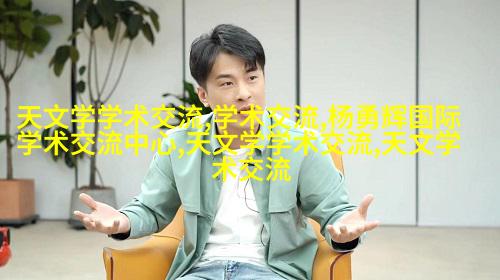 陈超 杭州荷声科技有限公司 Ultrasound on Silicon: Trends, Challenges and Opportunities 【ABSTRACT】 Silicon-based ultrasound transducers and integrated circuits are reshaping the medical ultrasound industry. As medical ultrasound imaging platforms move from conventional cart-based scanners to diverse new form factors such as 4-D imaging catheters, hand-held point-of-care probes and wearable patches, there is an increasing need for silicon-based integrated circuits that can be closely integrated with high-channel-count ultrasound transducers. The rapidly growing demand for more aggressive channel-count reduction, better imaging quality, faster communication and more powerful edge computing has presented both new challenges and opportunities for the design of silicon-based ultrasound frontends, while unlocking new applications and markets. This talk will review the recent advances of silicon-based transceivers and image processing solutions for emerging ultrasound imaging devices, and detail key obstacles in both technology and commercialization towards pocket-sized, wearable, and miniaturized 4-D ultrasound imaging devices. The advantages of ultrasound-on-silicon systems will be illustrated by giving examples of state-of-the-art designs featuring transducer-on-chip integration and compact circuits for high-voltage pulsing, beamforming, and digitization. An outlook on future opportunities in the era of silicon-based medical ultrasound will be given at the end. 基于半导体材料的超声换能器与芯片技术正在从底层维度重塑医疗超声工业。随着医用超声成像设备从传统的台式彩超平台向以四维成像介入微导管、手持探头和可穿戴贴片等全新形态为代表的下一代超声多样化生态演进,超声产业界对于高通道密度超声换能器与前置硅基芯片集成综合解决方案的需求亟待满足,对物理信道数量压缩前置、实时成像质量优化、通信带宽提升与边缘计算能力加载的需求快速增长,这些全新解锁的应用与市场为硅基超声技术的发展带来了新的挑战和机遇。本次报告将首先对各种不同形态的下一代超声成像器件、硅基集成前端收发系统与片上图像处理解决方案的最新进展进行回顾,并以一系列涵盖换能器-芯片集成、紧凑高压超声发射模块、微波束成形和低功耗数字化等关键技术的硅基超声前沿设计为案例,详细展示硅基超声技术在赋能便携、可穿戴和微型4-D超声导管等下一代超声设备时的技术潜力与可能遇到的关键挑战。在报告的最后,我们将对硅基超声时代的未来产业机遇进行展望。 【BIOGRAPHY】 Dr. Chao Chen received the B.Sc. degree in micro-electronics from Tsinghua University, Beijing, China, in 2010, and the M.Sc. (cum laude) and Ph.D. degrees in micro-electronics from the Delft University of Technology, Delft, The Netherlands, in 2012 and 2018, respectively.From 2017 to 2022, he was a Senior/Principal IC Engineer with Butterfly Network, Inc., Guilford, CT, USA, where he was involved in the development and commercialization of the world’s first CMUT-on-CMOS ultrasound-on-chip for hand-held personal ultrasound probes (Butterfly iQ/iQ+) and helped the company to go public on NYSE in 2021. From 2021 to 2022, he was also with the Delft University of Technology as a researcher, where he focused on the development of next-generation integrated circuits for 3D neuroimaging based on transcranial functional ultrasound (fUS). In 2023, he founded Sonosilicon, a Sino-Dutch joint-venture that focuses on commercializing silicon-based ultrasound and empowering next-generation medical ultrasound applications, where he is currently the Chief Executive Officer. Dr. Chen has authored or co-authored more than 40 internationally referred technical papers, including JSSC, ISSCC, T-UFFC and PNAS. He received the Else Kooi Award in 2019 and the IEEE IUS Best Student Paper Award in 2017. He was also a co-recipient of the 2021 ISSCC Anantha P. Chandrakasan Distinguished-Technical-Paper Award and Demonstration Award, the 2020 ISSCC Technology Innovation Award, and the 2017 A-SSCC Best Student Paper Award. He currently serves as a member of the Technical Program Committee of the European Solid-State Electronics Research Conference (ESSERC). 陈超博士2010年于清华大学获得微电子学士学位,2012年和2018年于荷兰代尔夫特理工大学分别获得微电子学硕士与博士学位。2017年加入美国创业公司Butterfly Network,历任高级/资深芯片设计工程师至2022年,期间参与了世界上首款用于个人掌上超声(Butterfly iQ/iQ+)的CMUT-on-CMOS片上超声模组的开发与量产,并帮助公司在2021年于纽交所上市。2021年至2022年期间, 于荷兰代尔夫特理工大学兼任研究员,主要研究方向为用于经颅功能超声三维神经成像的下一代超声成像芯片开发。2023年回国创立荷声科技(Sonosilicon),在中荷两地同时运营,致力于以硅基片上超声技术赋能下一代医疗超声应用。在JSSC, ISSCC, T-UFFC,PNAS等国际期刊和会议上发表40余篇学术论文;曾获2019年Else Kooi奖(荷兰王国微电子领域年度最佳青年研究员奖)和2017年国际超声研讨会(IUS)最佳学生论文奖,并作为共同作者获得2021年国际固态电路大会(ISSCC) Anantha P. Chandrakasan杰出技术论文奖和最佳演示奖,2020年ISSCC技术创新奖,及2017年亚洲固态电路会议(A-SSCC)最佳学生论文奖。目前担任欧洲固态电路会议(ESSERC)技术委员会委员。
陈超 杭州荷声科技有限公司 Ultrasound on Silicon: Trends, Challenges and Opportunities 【ABSTRACT】 Silicon-based ultrasound transducers and integrated circuits are reshaping the medical ultrasound industry. As medical ultrasound imaging platforms move from conventional cart-based scanners to diverse new form factors such as 4-D imaging catheters, hand-held point-of-care probes and wearable patches, there is an increasing need for silicon-based integrated circuits that can be closely integrated with high-channel-count ultrasound transducers. The rapidly growing demand for more aggressive channel-count reduction, better imaging quality, faster communication and more powerful edge computing has presented both new challenges and opportunities for the design of silicon-based ultrasound frontends, while unlocking new applications and markets. This talk will review the recent advances of silicon-based transceivers and image processing solutions for emerging ultrasound imaging devices, and detail key obstacles in both technology and commercialization towards pocket-sized, wearable, and miniaturized 4-D ultrasound imaging devices. The advantages of ultrasound-on-silicon systems will be illustrated by giving examples of state-of-the-art designs featuring transducer-on-chip integration and compact circuits for high-voltage pulsing, beamforming, and digitization. An outlook on future opportunities in the era of silicon-based medical ultrasound will be given at the end. 基于半导体材料的超声换能器与芯片技术正在从底层维度重塑医疗超声工业。随着医用超声成像设备从传统的台式彩超平台向以四维成像介入微导管、手持探头和可穿戴贴片等全新形态为代表的下一代超声多样化生态演进,超声产业界对于高通道密度超声换能器与前置硅基芯片集成综合解决方案的需求亟待满足,对物理信道数量压缩前置、实时成像质量优化、通信带宽提升与边缘计算能力加载的需求快速增长,这些全新解锁的应用与市场为硅基超声技术的发展带来了新的挑战和机遇。本次报告将首先对各种不同形态的下一代超声成像器件、硅基集成前端收发系统与片上图像处理解决方案的最新进展进行回顾,并以一系列涵盖换能器-芯片集成、紧凑高压超声发射模块、微波束成形和低功耗数字化等关键技术的硅基超声前沿设计为案例,详细展示硅基超声技术在赋能便携、可穿戴和微型4-D超声导管等下一代超声设备时的技术潜力与可能遇到的关键挑战。在报告的最后,我们将对硅基超声时代的未来产业机遇进行展望。 【BIOGRAPHY】 Dr. Chao Chen received the B.Sc. degree in micro-electronics from Tsinghua University, Beijing, China, in 2010, and the M.Sc. (cum laude) and Ph.D. degrees in micro-electronics from the Delft University of Technology, Delft, The Netherlands, in 2012 and 2018, respectively.From 2017 to 2022, he was a Senior/Principal IC Engineer with Butterfly Network, Inc., Guilford, CT, USA, where he was involved in the development and commercialization of the world’s first CMUT-on-CMOS ultrasound-on-chip for hand-held personal ultrasound probes (Butterfly iQ/iQ+) and helped the company to go public on NYSE in 2021. From 2021 to 2022, he was also with the Delft University of Technology as a researcher, where he focused on the development of next-generation integrated circuits for 3D neuroimaging based on transcranial functional ultrasound (fUS). In 2023, he founded Sonosilicon, a Sino-Dutch joint-venture that focuses on commercializing silicon-based ultrasound and empowering next-generation medical ultrasound applications, where he is currently the Chief Executive Officer. Dr. Chen has authored or co-authored more than 40 internationally referred technical papers, including JSSC, ISSCC, T-UFFC and PNAS. He received the Else Kooi Award in 2019 and the IEEE IUS Best Student Paper Award in 2017. He was also a co-recipient of the 2021 ISSCC Anantha P. Chandrakasan Distinguished-Technical-Paper Award and Demonstration Award, the 2020 ISSCC Technology Innovation Award, and the 2017 A-SSCC Best Student Paper Award. He currently serves as a member of the Technical Program Committee of the European Solid-State Electronics Research Conference (ESSERC). 陈超博士2010年于清华大学获得微电子学士学位,2012年和2018年于荷兰代尔夫特理工大学分别获得微电子学硕士与博士学位。2017年加入美国创业公司Butterfly Network,历任高级/资深芯片设计工程师至2022年,期间参与了世界上首款用于个人掌上超声(Butterfly iQ/iQ+)的CMUT-on-CMOS片上超声模组的开发与量产,并帮助公司在2021年于纽交所上市。2021年至2022年期间, 于荷兰代尔夫特理工大学兼任研究员,主要研究方向为用于经颅功能超声三维神经成像的下一代超声成像芯片开发。2023年回国创立荷声科技(Sonosilicon),在中荷两地同时运营,致力于以硅基片上超声技术赋能下一代医疗超声应用。在JSSC, ISSCC, T-UFFC,PNAS等国际期刊和会议上发表40余篇学术论文;曾获2019年Else Kooi奖(荷兰王国微电子领域年度最佳青年研究员奖)和2017年国际超声研讨会(IUS)最佳学生论文奖,并作为共同作者获得2021年国际固态电路大会(ISSCC) Anantha P. Chandrakasan杰出技术论文奖和最佳演示奖,2020年ISSCC技术创新奖,及2017年亚洲固态电路会议(A-SSCC)最佳学生论文奖。目前担任欧洲固态电路会议(ESSERC)技术委员会委员。 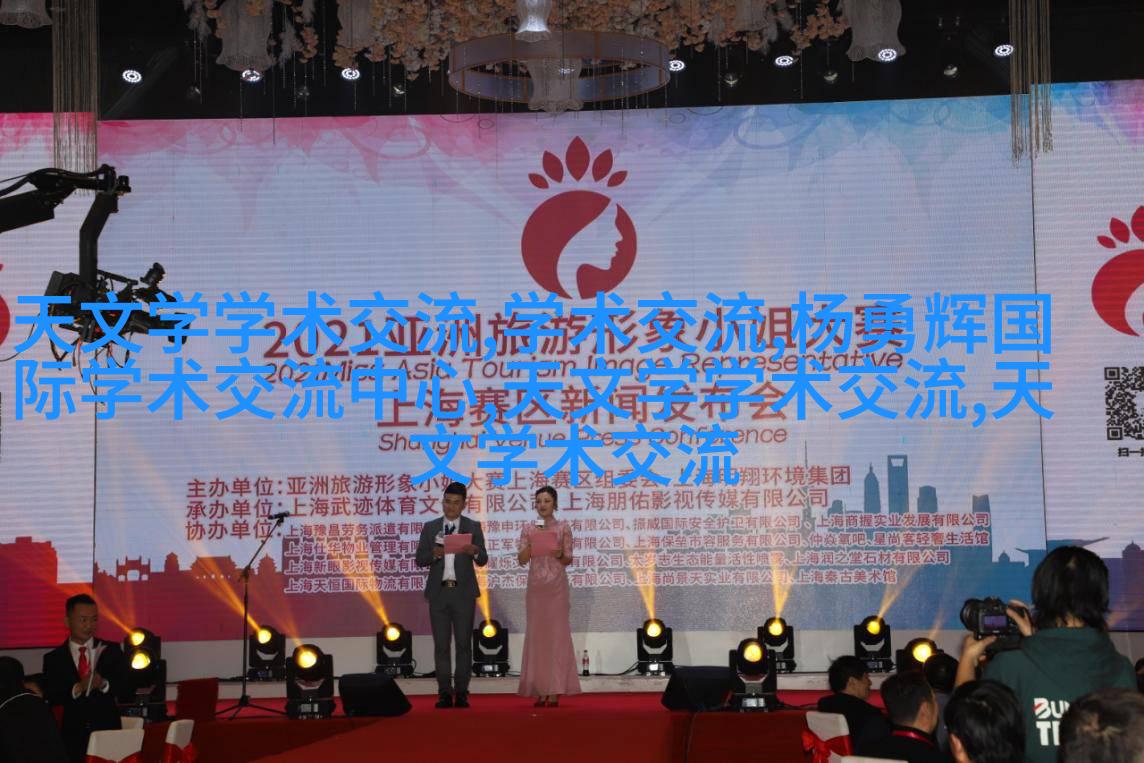 陈泽宇 中南大学 Ultrasound Transducers for Modulating Biological Tissue Properties 【ABSTRACT】 Traditional ultrasound imaging and therapy mainly rely on the mechanical and thermal effects of ultrasound waves, which are achieved through the propagation characteristics of mechanical waves in different media and their interaction with tissues. In recent years, an increasing amount of research has revealed that ultrasound can influence biological tissues from optical and cellular biological perspectives. These emerging principles provide new directions for the design of future ultrasound transducers.In this presentation, I will introduce a virtual in vivo optical waveguide technology based on acoustic holographic ultrasound transducers. By designing and holographically controlling three-dimensional acoustic fields, we can alter the spatial refractive index of biological tissues, suppress light scattering, and thereby improve the signal-to-noise ratio of optical imaging. Additionally, I will introduce an organoid culture technique based on vortex acoustic fields. This method constructs a virtual three-dimensional scaffold using vortex acoustic fields to aggregate tumor cells and promote cell connection and differentiation. Without the need for Matrigel, this approach successfully cultivates human-derived melanoma and breast cancer organoids and establishes a tumor organoid-immune cell co-culture system.Through these studies, we can see the enormous potential of emerging ultrasound theories and technologies in biological and medical applications. 经典的超声成像和治疗主要依赖于的机械效应及热效应,这些效应是利用机械波在不同介质中的传播特性及其与组织的相互作用实现的。近年来,越来越多的研究揭示了超声可以从光学、细胞生物学的角度影响生物组织,这些新兴的原理为未来超声换能器的设计提供了方向。在本次报告中,我将介绍基于声全息超声换能器的虚拟光波导技术。通过对三维声场的设计及全息调控,改变生物组织的空间折射率,抑制光波的散射,进而提升光学成像的信噪比。此外,还将介绍基于涡旋声场的类器官培养技术。通过涡旋声场构建虚拟三维支架,凝聚肿瘤细胞,并促进细胞的连接与分化。该方法在无基质胶的条件下可以成功培养人源的黑色素瘤、乳腺癌类器官,并构建肿瘤类器官-免疫细胞共培养系统。通过这些研究,我们可以看到新兴的超声理论与技术在生物学与医学中巨大的应用潜力。 【BIOGRAPHY】 Dr. Zeyu Chen is a professor in the School of Mechanical and Electrical Engineering at Central South University. He graduated with a bachelors degree from the School of Materials Science and Engineering at Central South University in 2012 and obtained his Ph.D. in Biomedical Engineering from the University of Southern California in 2017. He joined Central South University in 2019 as a professor. His main research areas include ultrasound transducers and microfluidic chips. He has published more than 30 SCI papers in international journals such as Science Advances, The Innovation, Advanced Science, Advanced Materials, Small, and Nano Letters. 陈泽宇博士是中南大学机电工程学院教授。2012年本科毕业于中南大学材料科学与工程学院,2017年获南加州大学生物医学工程博士学位。2019年入职中南大学,获聘教授。主要研究方向包括超声换能器、微流控芯片,在Science Advances、The Innovation、Advanced Science、Advanced Materials、Small、Nano Letter等国际期刊上发表30余篇SCI论文。 【主持人】
陈泽宇 中南大学 Ultrasound Transducers for Modulating Biological Tissue Properties 【ABSTRACT】 Traditional ultrasound imaging and therapy mainly rely on the mechanical and thermal effects of ultrasound waves, which are achieved through the propagation characteristics of mechanical waves in different media and their interaction with tissues. In recent years, an increasing amount of research has revealed that ultrasound can influence biological tissues from optical and cellular biological perspectives. These emerging principles provide new directions for the design of future ultrasound transducers.In this presentation, I will introduce a virtual in vivo optical waveguide technology based on acoustic holographic ultrasound transducers. By designing and holographically controlling three-dimensional acoustic fields, we can alter the spatial refractive index of biological tissues, suppress light scattering, and thereby improve the signal-to-noise ratio of optical imaging. Additionally, I will introduce an organoid culture technique based on vortex acoustic fields. This method constructs a virtual three-dimensional scaffold using vortex acoustic fields to aggregate tumor cells and promote cell connection and differentiation. Without the need for Matrigel, this approach successfully cultivates human-derived melanoma and breast cancer organoids and establishes a tumor organoid-immune cell co-culture system.Through these studies, we can see the enormous potential of emerging ultrasound theories and technologies in biological and medical applications. 经典的超声成像和治疗主要依赖于的机械效应及热效应,这些效应是利用机械波在不同介质中的传播特性及其与组织的相互作用实现的。近年来,越来越多的研究揭示了超声可以从光学、细胞生物学的角度影响生物组织,这些新兴的原理为未来超声换能器的设计提供了方向。在本次报告中,我将介绍基于声全息超声换能器的虚拟光波导技术。通过对三维声场的设计及全息调控,改变生物组织的空间折射率,抑制光波的散射,进而提升光学成像的信噪比。此外,还将介绍基于涡旋声场的类器官培养技术。通过涡旋声场构建虚拟三维支架,凝聚肿瘤细胞,并促进细胞的连接与分化。该方法在无基质胶的条件下可以成功培养人源的黑色素瘤、乳腺癌类器官,并构建肿瘤类器官-免疫细胞共培养系统。通过这些研究,我们可以看到新兴的超声理论与技术在生物学与医学中巨大的应用潜力。 【BIOGRAPHY】 Dr. Zeyu Chen is a professor in the School of Mechanical and Electrical Engineering at Central South University. He graduated with a bachelors degree from the School of Materials Science and Engineering at Central South University in 2012 and obtained his Ph.D. in Biomedical Engineering from the University of Southern California in 2017. He joined Central South University in 2019 as a professor. His main research areas include ultrasound transducers and microfluidic chips. He has published more than 30 SCI papers in international journals such as Science Advances, The Innovation, Advanced Science, Advanced Materials, Small, and Nano Letters. 陈泽宇博士是中南大学机电工程学院教授。2012年本科毕业于中南大学材料科学与工程学院,2017年获南加州大学生物医学工程博士学位。2019年入职中南大学,获聘教授。主要研究方向包括超声换能器、微流控芯片,在Science Advances、The Innovation、Advanced Science、Advanced Materials、Small、Nano Letter等国际期刊上发表30余篇SCI论文。 【主持人】  Yipeng Lu 北京大学 【研讨嘉宾】
Yipeng Lu 北京大学 【研讨嘉宾】  Jessica Liu Strohmann 美国高通公司
Jessica Liu Strohmann 美国高通公司  Hongjie Hu 北京大学
Hongjie Hu 北京大学

